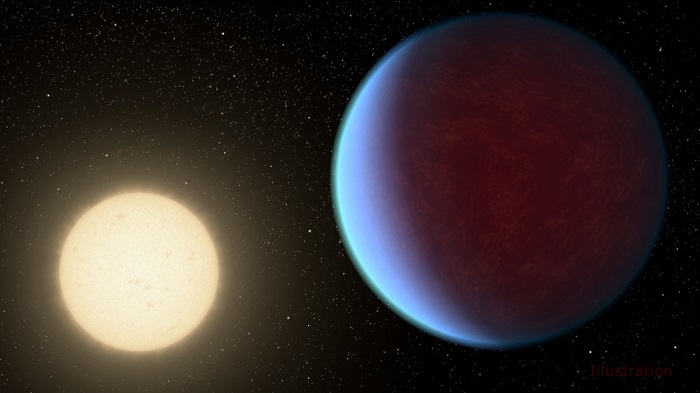Twice as big as Earth, the super-Earth 55 Cancri e was thought to have lava flows on its surface. The planet is so close to its star, the same side of the planet always faces the star, such that the planet has permanent day and night sides. Based on a 2016 study using data from NASA's Spitzer Space Telescope, scientists speculated that lava would flow freely in lakes on the starlit side and become hardened on the face of perpetual darkness. The lava on the dayside would reflect radiation from the star, contributing to the overall observed temperature of the planet.
Now, a deeper analysis of the same Spitzer data finds this planet likely has an atmosphere whose ingredients could be similar to those of Earth's atmosphere, but thicker. Lava lakes directly exposed to space without an atmosphere would create local hot spots of high temperatures, so they are not the best explanation for the Spitzer observations, scientists said.
Using an improved model of how energy would flow throughout the planet and radiate back into space, researchers find that the night side of the planet is not as cool as previously thought. The "cold" side is still quite toasty by Earthly standards, with an average of 2,400 to 2,600 degrees Fahrenheit (1,300 to 1,400 Celsius), and the hot side averages 4,200 degrees Fahrenheit (2,300 Celsius). The difference between the hot and cold sides would need to be more extreme if there were no atmosphere.
Researchers say the atmosphere of this mysterious planet could contain nitrogen, water and even oxygen molecules found in our atmosphere, too but with much higher temperatures throughout. The density of the planet is also similar to Earth, suggesting that it, too, is rocky. The intense heat from the host star would be far too great to support life, however, and could not maintain liquid water.
Spitzer observed 55 Cancri e between June 15 and July 15, 2013, using a camera specially designed for viewing infrared light, which is invisible to human eyes. Infrared light is an indicator of heat energy. By comparing changes in brightness Spitzer observed to the energy flow models, researchers realized an atmosphere with volatile materials could best explain the temperatures. There are many open questions about 55 Cancri e, especially: Why has the atmosphere not been stripped away from the planet, given the perilous radiation environment of the star?
